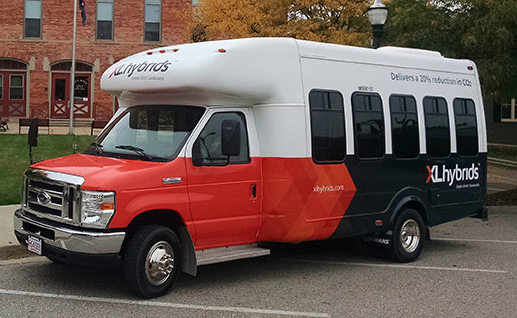The ABCs of the New EPAct Alt-Fuel Acquisition Credits
 By Natalie Weimer, Marketing Manager, XL Hybrids: The State and Alternative Fuel Provider Fleet Program of the Energy Policy Act (EPAct) was established in 1992 to reduce U.S. dependence on imported petroleum by accelerating the introduction of alternative fuel vehicles (AFV’s) in state government and alternative fuel provider fleets.
By Natalie Weimer, Marketing Manager, XL Hybrids: The State and Alternative Fuel Provider Fleet Program of the Energy Policy Act (EPAct) was established in 1992 to reduce U.S. dependence on imported petroleum by accelerating the introduction of alternative fuel vehicles (AFV’s) in state government and alternative fuel provider fleets.
Six months ago, the U.S. Department of Energy (DOE) announced new credits for state, utility and university fleets operating under the standard compliance. Covered fleets must acquire alternative-fuel vehicles as a percentage of their annual light-duty vehicle acquisitions.
The new ruling begins with the 2014 model year and now includes hybrid and electric drive vehicles – expanding options and making compliance easier for state fleets and alt-fuel provider fleets. Here are the simple ABCs of the new EPAct rule.
A – Additional Alternative Fuel Vehicles
Since EPAct was enacted over 20 years ago, a progression of alternative fuel technologies – including ethanol, natural gas and liquefied petroleum gas (propane) – have helped covered fleets meet their mandates. However with this new ruling, the following additional alternative vehicle technologies are now eligible for credit: hybrid electric vehicles (HEV’s), plug-in electric drive vehicles (PHEV’s), fuel cell electric vehicles, and neighborhood electric vehicles.
B – Better and Expanded Credit Options
How many credits can be earned for various types of electric drive vehicles? Here are the credit allocations for newly eligible vehicles:
• Hybrid electric vehicles (HEVs) — one-half credit
• Plug-in electric vehicles — one-half credit
• Fuel cell electric vehicles — one-half credit
• Neighborhood electric vehicles — one-fourth credit
Because the program’s primary emphasis is on light-duty AFVs, fleets can earn AFV credits toward compliance for the acquisition of medium- or heavy-duty AFVs (and in model year 2014 or later, for the acquisition of medium- or heavy-duty fuel cell electric or hybrid electric vehicles that are not AFVs) only after it has fulfilled its light-duty AFV-acquisition requirement for that model year.
Fleets may bank credits earned in this manner and later apply these banked credits toward its AFV-acquisition require¬ments in future model years.
This is welcome news for fleets because it gives them more options to meet the standards, especially with advancing hybrid and electric vehicle technologies. For example, the XL Hybrids hybrid electric conversion system delivers a 25 percent increase in miles driven per-gallon, and reduces carbon dioxide emissions.
For utilities, government and university fleets without the alternative fueling infrastructure necessary for, say, CNG and LPG technologies, the XL Hybrids system can be an easy upfit or retrofit option to earn EPAct credits. By embracing hybrid and electric vehicle technology state, universities and alt-fuel provider fleets can more easily comply with the new EPAct standards.
C – Compliance for Investments
For more information on compliance, visit the EPAct website’s compliance page.
Category: General Update, Green, Management










